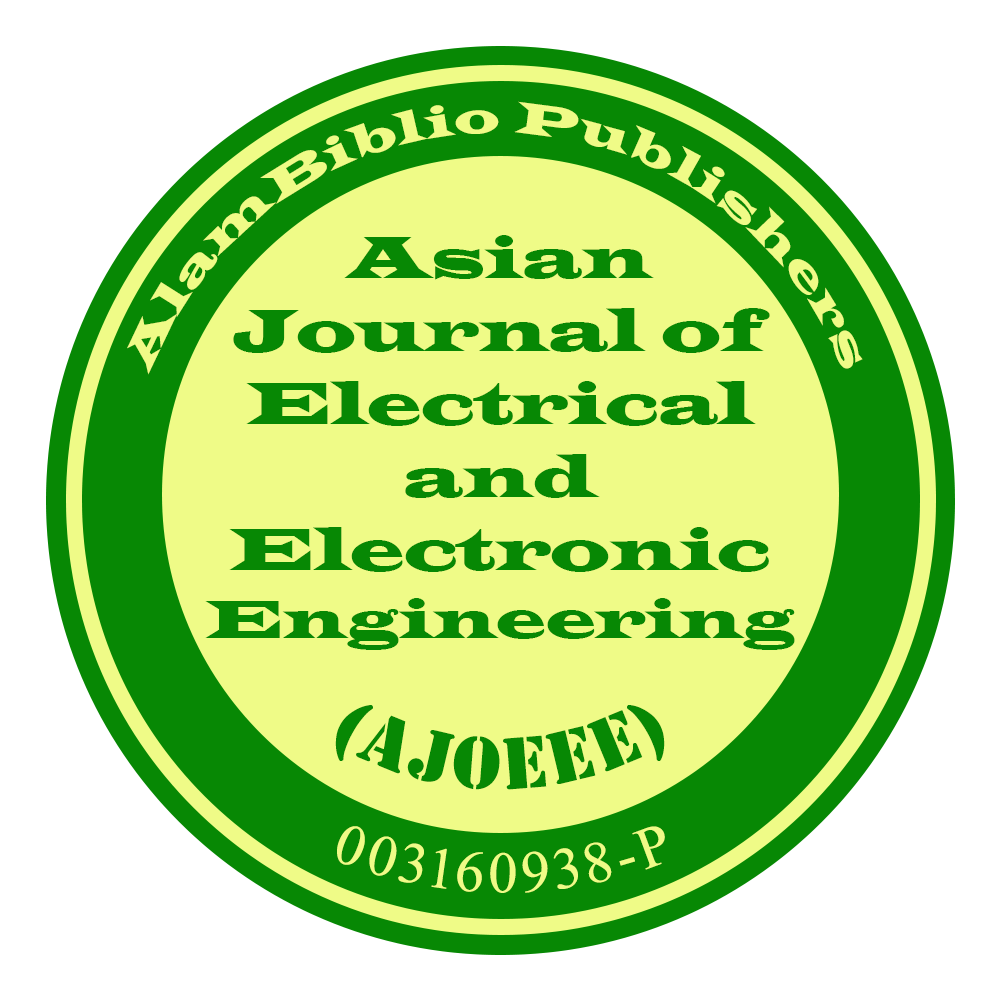IoT-Based Lab System for Teaching Methods in Times of Crisis
DOI:
https://doi.org/10.69955/ajoeee.2021.v1i2.19Keywords:
Internet of Things, IR4.0, hands-on laboratory, hardware-based language, ArduinoAbstract
The revolution of communication technology has enabled people to communicate easily with others and perform many tasks from a distance. The Internet plays an important role in communication and helps to perform tasks and make people's lives easier. It led to the introduction of the Internet of Things (IoT) technology, where physical objects are connected to the Internet to perform a specific task. So that IoT can be a valuable tool in times of crisis, most modern industries can produce their products automatically and remote monitor and control the system. The same technique can be applied to overcome face-to-face teaching in science and engineering education during times of crisis. This research proposes the design and development of an IoT-based hands-on laboratory system that can be operated remotely. The methodology has been implemented and worked based on the concept of virtual reality. The research has been carried out for two simple electrical laboratory experiments: the basic logic gate and Ohm’s Law experiment. The experimental results show that the system can be implemented since the results obtained are satisfy their theoretical results. Furthermore, an improvement can be made so that the system can be integrated with the Internet and the system can function efficiently.
Metrics
Downloads
References
K. Chopra, K. Gupta, and A. Lambora, “Future Internet: The Internet of Things-A Literature Review,” Proc. Int. Conf. Mach. Learn. Big Data, Cloud Parallel Comput. Trends, Perspectives Prospect. Com. 2019, pp. 135–139, 2019, 10.1109/COMITCon.2019.8862269. https://doi.org/10.1109/COMITCon.2019.8862269 DOI: https://doi.org/10.1109/COMITCon.2019.8862269
J. C. Talwana and H. J. Hua, “Smart World of Internet of Things (IoT) and Its Security Concerns,” Proc. - 2016 IEEE Int. Conf. Internet Things; IEEE Green Comput. Commun. IEEE Cyber, Phys. Soc. Comput. IEEE Smart Data, iThings-GreenCom-CPSCom-Smart Data 2016, pp. 240–245, 2017, https://doi.org/10.1109/iThings-GreenCom-CPSCom-SmartData.2016.64
J. S. He, S. Ji, and P. Bobbie, “Internet of things (IoT)-based learning framework to facilitate STEM undergraduate education,” Proc. SouthEast Conf. ACMSE 2017, pp. 88–94, 2017, https://doi.org/10.1145/3077286.3077321 DOI: https://doi.org/10.1145/3077286.3077321
K. Lensing and J. Friedhoff, “Designing a curriculum for the Internet-of-Things-Laboratory to foster creativity and a maker mindset within varying target groups,” Procedia Manuf., vol. 23, no. 2017, pp. 231–236, 2018, https://doi.org/10.1016/j.promfg.2018.04.022 DOI: https://doi.org/10.1016/j.promfg.2018.04.022
WHO, “Sustainable Development Goals: Guidelines for the Use of the SDG Logo,” United Nations Dep. Glob. Commun., no. May, 2020, [Online].
Available: https://www.un.org/sustainabledevelopment/news/communications-material/. Downloaded on 10 January 2021.
“Internet Of Things Based Portable Gas Analyser and Monitoring System Using Raspberry Pi and Arduino by Muhamad Farhan Bin Mohd Pu’ad, A thesis submitted in fulfilment of the requirement for the degree of Master of Science (Electronics Engineering) Kull,” no. September 2019.
A. Singh, D. Gupta, and N. Mittal, “Enhancing Home security systems Using IoT,” Proc. 3rd Int. Conf. Electron. Commun. Aerosp. Technol. ICECA 2019, pp. 133–137, 2019, https://doi.org/10.1109/ICECA.2019.8821833 DOI: https://doi.org/10.1109/ICECA.2019.8821833
C. Onime, J. Uhomoibhi, and M. Zennaro, “Demonstration of a low-cost implementation of an existing hands-on laboratory experiment in electronic engineering,” Proc. 2014 11th Int. Conf. Remote Eng. Virtual Instrumentation, REV 2014, no. February, pp. 195–197, 2014, https://doi.org/10.1109/REV.2014.6784253 DOI: https://doi.org/10.1109/REV.2014.6784253
Z. Hossain, A. M. Chung, and I. H. Riedel-Kruse, “Real-time and turn-based biology online experimentation,” Proc. 2015 12th Int. Conf. Remote Eng. Virtual Instrumentation, REV 2015, no. February, pp. 86–89, 2015, https://doi.org/10.1109/REV.2015.7087268 DOI: https://doi.org/10.1109/REV.2015.7087268
Y. A. Badamasi, “The working principle of an Arduino,” Proc. 11th Int. Conf. Electron. Comput. Comput. ICECCO 2014, 2014, https://doi.org/10.1109/ICECCO.2014.6997578 DOI: https://doi.org/10.1109/ICECCO.2014.6997578
Downloads
Published
Issue
Section
License
Copyright (c) 2021 Asian Journal of Electrical and Electronic Engineering

This work is licensed under a Creative Commons Attribution-NonCommercial 4.0 International License.
The Asian Journal of Electrical and Electronic Engineering journal is licensed under a Creative Commons Attribution-NonCommercial 4.0 International License.














